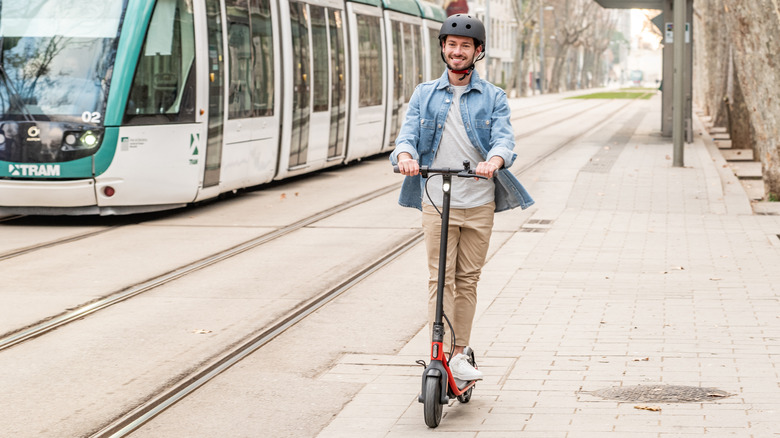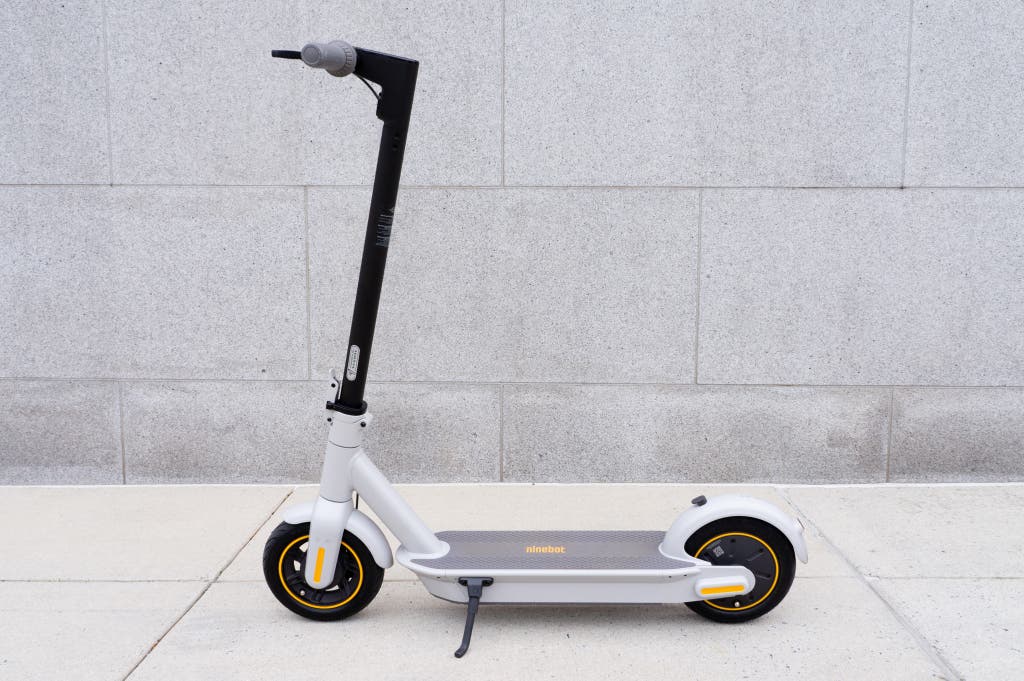How to Start an Electric Scooter Business in 2023

Starting a scooter business in 2023 is an idea that many people have. Recently, many people living in urban cities are catching up with the electric scooter rave sweeping across the world. This has led to an increase in the sales of these micromobility devices, and with it comes a business opportunity for people who’re interested in starting a scooter rental business.
While many people prefer to buy and own their private scooters, many others would rather just rent one whenever they need it. Consequent to this, the scooter rental market has been on a steady growth trend recently, and is projected to increase by more than 400% until 2027.
If you want to start an electric scooter rental business, this article will guide you on the essential steps you need to take to achieve a successful venture.
What Are the Financial Benefits of a Scooter Business?
Just like every other venture, you need to know the ins and outs of this e-scooter rental service before you start it. You have to understand how the vehicles work, how to pick the best brands, how to fix scooter problems, and other best practices that are required to thrive in this industry.
A scooter rental enterprise can be quite profitable. In the best case, if you invest a capital of about $7,000 to $97,000, you can expect to make a profit of about $84,000 to $210,000 each year depending on the demand in your area and the amount you charge your clients per hour. The good part is that if you do things the right way and there’s a good demand in your city, it takes only about 6 months to build this startup.

What Are the Steps You Should Follow If You Want to Start a Scooter Rental Business?
Now that you have decided to engage in scooter rental business, here are the vital steps you need to take to ensure that the venture becomes successful:
Step #1:Do a Market Research to Decide if the Business is Right for You
Before you invest in any market, it is necessary to do a proper research to find out all the essential information. This will help you to decide if the investment would be the best fit for you. You have to weigh the pros and cons and check the growth potential of the industry to determine its future prospects and profit potentials.
As at 2019, the bike and scooter rental market was worth $2.5 billion. Experts predict that by 2027, it’ll record a 400% growth to reach about $10.1 billion. It is an expanding market where you can charge up to $15 per hour, and you can run the operation even from your home. However, you must get ready for challenges like cost of maintenance, poor handling, risk of vandalism and growing competition.
Location
Selecting the right location for your e-scooter business is critical. Look for areas with high foot traffic, tourist attractions, or public transportation hubs. Success depends on demand. Some cities may already be saturated with several operators, so consider choosing cities with fewer operators. Otherwise you will have to spend a lot of money on marketing to entice customers away from your competitors and towards your services,
You will need to get permission from the local government or property owners to operate in these locations. Also, ensure that your chosen location complies with local laws and regulations governing e-scooter rentals.

City regulations
In recent years, the demand and offering for ridesharing have grown to such an extent that cities have been forced to regulate this business sector. If you are planning to operate within city limits, you’ll definitely have to check out the relevant legislation. Regulations may be in place that have been set by the City Council. So the first thing to find out is – is vehicle sharing allowed at all? In cities with high vehicle ridesharing service and density, the city council might organize tenders to identify which companies can provide the most appropriate ridesharing service. Other requirements for companies might also apply, so you should monitor this situation carefully.
Opportunities
The most successful firms are the ones who solve existing problems, so you should find a loophole in the existing market and decide what you’ll do differently to stand out. You may need to read customer reviews to find pain points and other things that your competitors are not doing right. Solving these problems will help position your firm for growth.
Step #2: Consider the Expenses
When starting a business, creating an Excel sheet is a common first step. While it’s impossible to predict all costs, you can gain insight from existing companies and their cost structures. When developing your own plan, it’s important to consider various expenses such as
- Charging & operating costs
- Maintenance costs for vehicle repairs
- Vehicle purchase and depreciation costs
- Bank commissions & transaction fees
- Marketing, Customer support & IT system support

Step #3: Apply for City Tenders
Depending on the size of your fleet and the city you want to operate in, local governments may issue tenders for e-scooter operators to provide rental services in their city or town. You’ll need to apply for these tenders and compete against other operators to secure the contract.
Applying for these tenders can be a highly competitive process, as there are often numerous other e-scooter operators vying for the same contract. As such, it is important to carefully consider the specific requirements of each tender and tailor your application accordingly. This may involve highlighting your company’s strengths and unique selling points, such as a focus on sustainability, safety, or affordable pricing.
It is also worth noting that securing a tender contract can offer numerous benefits for your e-scooter business. For example, working with local governments can offer opportunities for collaboration and mutual support, such as working together to improve infrastructure or lobby for better regulations.
However, it is important to approach the tender process with caution and ensure that you have the necessary resources and capabilities to fulfil the requirements of the contract. This may involve conducting thorough market research and feasibility studies, developing robust operational procedures, and investing in adequate staffing, maintenance, and marketing.
Step #4: Choose the Right E-Scooter for Your Fleet
To keep the riders on your fleet, it is important to choose a durable and sustainable scooter. Otherwise, vehicle sharing could not become profitable at all, due to the fact that too much money will be poured into maintenance, eventually drowning all your resources.
-
Riding comfort = crosses every bump in the road easily
-
Theft protection = secure your asset
-
Lifetime value = longevity, durability & cost
-
Maintenance & support = ease of repair with minimum downtime
-
Weatherproofed = always ready to go, no matter the conditions
-
Differentiator = your scooter is chosen over the competition

Step #5: What to Consider before Purchasing or Leasing E-Scooters
You will need a minimum of 50-100 vehicles to start your business. Accordingly, you can calculate the amount of the initial investment you require.
When you start to do your calculations, start with the vehicle price. From one perspective, this is the easiest part, but it is very important to calculate:
- How many rides should be taken with one vehicle during the day for it to be profitable?
- What is the value of one ride?
- What is the structure of your costs? You have to insure every vehicle, pay taxes, and get the vehicles inspected from time to time. Are all these positions included in your cost estimate?
Starting an e-scooter business can be capital-intensive, so you’ll need to secure funding to cover the costs of purchasing equipment. This may involve seeking investment from venture capitalists or other investors, or obtaining a loan from a bank or other financial institution.
Step #6: Develop or outsource a Mobile App
A mobile app is an essential tool for your e-scooter business. In order to run a successful sharing business, you need to have a reliable technology platform that allows you to manage your fleet, track rides, and handle payments. It will allow users to locate and rent scooters, as well as provide them with information on scooter availability, pricing, and maintenance. You can also use the app to collect user feedback and improve the overall customer experience. There are various options on the market, so you’ll need to do some research to find the one that best suits your needs.

Step #7: Plan Your E-Scooter Fleet Management
After you’ve planned your e-scooter business and created a budget, the next step is to develop a comprehensive fleet management system. This system should be designed to ensure that your e-scooters are well-maintained and available for use at all times. Here are some things to consider when creating your fleet management system:
1st: Plan your daily operations – Charging and Maintenance
Every day, you’ll need to check the condition of each e-scooter to ensure that it’s in good working order. This may involve charging the battery or making minor repairs. Be aware that the cost of maintenance and charging can eat up as much as 30-40% of your overall costs, so plan accordingly
2nd: Factor in the cost of Spare Parts
On average, you should plan to spend about 10% of the total value of each e-scooter on spare parts. It’s also important to have a proper warehouse to store these parts. Otherwise, you risk losing up to 30% of your fleet for three months due to a shortage of spare parts.
3rd: Consider the Team required to Manage your Fleet
For every 100 e-scooters, you’ll need at least two employees to inspect and collect them. Be sure to factor in their salaries, including the possibility of overtime pay for work at night. You should also consider how they’ll get around the city, particularly if an e-scooter breaks down and needs to be serviced.
4th: Customer Support is critical to your business
No matter how mature the market is, your customers will always have questions or issues. You’ll need to have a team in place to answer their queries and address their concerns. Keep in mind that customer reviews can make or break your business, so it’s important to provide excellent customer service.
